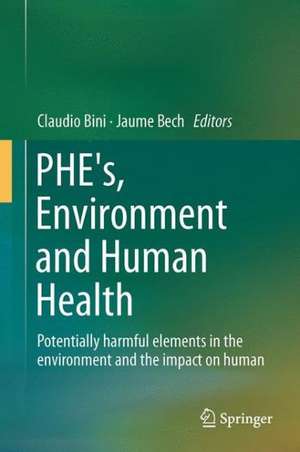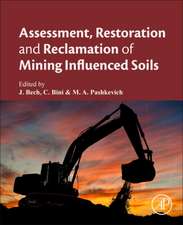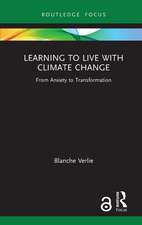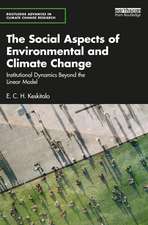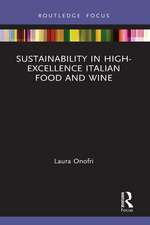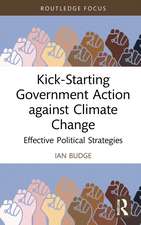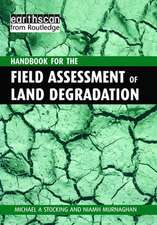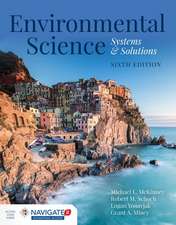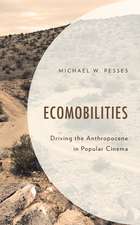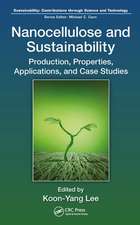PHEs, Environment and Human Health: Potentially harmful elements in the environment and the impact on human health
Editat de Claudio Bini, Jaume Bechen Limba Engleză Hardback – 27 mai 2014
Thanks to the collaboration of numerous colleagues, the book outlines the state of art in PHEs research in several countries and is enforced with case studies and enriched with new data, not published elsewhere. The book will provide to Stakeholders (both Scientists Professionals and Public Administrators) and also to non-specialists a lot of data on the concentrations of metals in soils and the environment and the critical levels so far established, in the perspective to improve the environmental quality and the human safety.
| Toate formatele și edițiile | Preț | Express |
|---|---|---|
| Paperback (1) | 953.65 lei 43-57 zile | |
| SPRINGER NETHERLANDS – 16 aug 2016 | 953.65 lei 43-57 zile | |
| Hardback (1) | 967.08 lei 43-57 zile | |
| SPRINGER NETHERLANDS – 27 mai 2014 | 967.08 lei 43-57 zile |
Preț: 967.08 lei
Preț vechi: 1179.37 lei
-18% Nou
Puncte Express: 1451
Preț estimativ în valută:
185.11€ • 201.14$ • 155.59£
185.11€ • 201.14$ • 155.59£
Carte tipărită la comandă
Livrare economică 21 aprilie-05 mai
Preluare comenzi: 021 569.72.76
Specificații
ISBN-13: 9789401789646
ISBN-10: 9401789649
Pagini: 484
Ilustrații: XV, 467 p. 51 illus., 27 illus. in color.
Dimensiuni: 155 x 235 x 35 mm
Greutate: 1.07 kg
Ediția:2014
Editura: SPRINGER NETHERLANDS
Colecția Springer
Locul publicării:Dordrecht, Netherlands
ISBN-10: 9401789649
Pagini: 484
Ilustrații: XV, 467 p. 51 illus., 27 illus. in color.
Dimensiuni: 155 x 235 x 35 mm
Greutate: 1.07 kg
Ediția:2014
Editura: SPRINGER NETHERLANDS
Colecția Springer
Locul publicării:Dordrecht, Netherlands
Public țintă
ResearchCuprins
Preface.- Introduction.- Chapter 1. Potentially harmful elements in the atmosphere.- Chapter 2. Harmful elements in estuarine and coastal systems.- Chapter 3. Potentially Harmful Elements in Agricultural Soils.- Chapter 4. Potentially harmful elements in forest soils: A pedological viewpoint.- Chapter 5. Potentially Harmful Elements in Abandoned Mine Waste.- Chapter 6. Potentially harmful elements in urban soil.- Chapter 7. Remediation of potentially toxic elements in contaminated soils.- Chapter 8. Potential Hazardous elements fluxes from soil to plants and the food chain.- Chapter 9. Trace elements and food safety.- Chapter 10. Risk assessment of PHEs.- Chapter 11. Potentially harmful elements and human health.
Recenzii
From the book reviews:
“This book, with contributions by 40-plus international research scientists/experts, carefully and comprehensively examines potentially harmful elements (PHEs) and their health effects. It is an up-to-date review/study of the conditions (environmental quality) of the soil, and to a lesser extent, the atmosphere and estuarine/coastal ecosystems on a global scale. … Summing Up: Highly recommended. Upper-division undergraduates and above.” (A. S. Casparian, Choice, Vol. 52 (5), January, 2015)
“This book, with contributions by 40-plus international research scientists/experts, carefully and comprehensively examines potentially harmful elements (PHEs) and their health effects. It is an up-to-date review/study of the conditions (environmental quality) of the soil, and to a lesser extent, the atmosphere and estuarine/coastal ecosystems on a global scale. … Summing Up: Highly recommended. Upper-division undergraduates and above.” (A. S. Casparian, Choice, Vol. 52 (5), January, 2015)
Textul de pe ultima copertă
Heavy metals in the environment continue to receive attention due to the greater understanding of their toxicological importance in ecosystems, agriculture and human health.
Research on potentially harmful elements (PHEs) in life, agriculture and environmental sciences is extensively increasing since the last decades, owing to the larger consciousness of general population on the risks induced by anthropic activities.
This book is dedicated to the occurrence and behaviour of PHEs in the different compartments of the environment, with special reference to soil as one of the most vulnerable ecosystems, and a precious resource with limited resilience capacity.
Therefore, starting from the atmosphere (chapter 1), through the aquatic environment (chapter 2) and the different soil uses (chapters 3, 4), the book also encompasses all the anthropic systems where PHEs play a significant role (mine and urban areas, chapters 5, 6). The soil-plant relationships, and the element fluxes from soil to plant and the food chain, including an overview on soil remediation, are explored in chapters 7, 8. In the last part of the book, trace elements join the food safety (chapter 9) and the risk assessment (chapter 10), concluding with the potential risk to human health (chapter 11), which is the main purpose of the whole book: to ensure a safe environment and a good quality of life to new generations.
The book provides new insight on the role and function of PHEs in the environmental and human health, following fundamental textbooks, without forgetting recent thousands of contributions from several scientific domains, not only soil science, but also plant physiology, biology, epidemiology, medicine, and in particular oncology.
The book covers a list of the most environmentally important elements involved in environmental and human health. Key elements include: arsenic (As), cadmium (Cd), chromium (Cr), mercury (Hg), lead (Pb), selenium (Se).Emerging are those elements that have received less scientific attention, but nevertheless are of potential environmental concern, with reflection on human health.
Research on potentially harmful elements (PHEs) in life, agriculture and environmental sciences is extensively increasing since the last decades, owing to the larger consciousness of general population on the risks induced by anthropic activities.
This book is dedicated to the occurrence and behaviour of PHEs in the different compartments of the environment, with special reference to soil as one of the most vulnerable ecosystems, and a precious resource with limited resilience capacity.
Therefore, starting from the atmosphere (chapter 1), through the aquatic environment (chapter 2) and the different soil uses (chapters 3, 4), the book also encompasses all the anthropic systems where PHEs play a significant role (mine and urban areas, chapters 5, 6). The soil-plant relationships, and the element fluxes from soil to plant and the food chain, including an overview on soil remediation, are explored in chapters 7, 8. In the last part of the book, trace elements join the food safety (chapter 9) and the risk assessment (chapter 10), concluding with the potential risk to human health (chapter 11), which is the main purpose of the whole book: to ensure a safe environment and a good quality of life to new generations.
The book provides new insight on the role and function of PHEs in the environmental and human health, following fundamental textbooks, without forgetting recent thousands of contributions from several scientific domains, not only soil science, but also plant physiology, biology, epidemiology, medicine, and in particular oncology.
The book covers a list of the most environmentally important elements involved in environmental and human health. Key elements include: arsenic (As), cadmium (Cd), chromium (Cr), mercury (Hg), lead (Pb), selenium (Se).Emerging are those elements that have received less scientific attention, but nevertheless are of potential environmental concern, with reflection on human health.
Caracteristici
Up-to-date review of the most significant environmental contaminants Ties environmental aspects with epidemiology/medical geography A special chapter devoted to the relationships between PHEs and human health Suggestions for avoiding intake of poisonous substances with daily diet Examines the exposure-dose-response effects of PHEs in the human population Includes current studies on the soil-plant system and links with the food chain Includes supplementary material: sn.pub/extras
